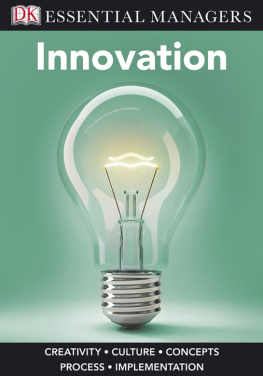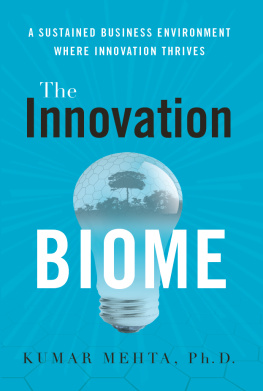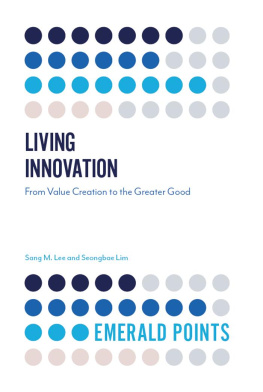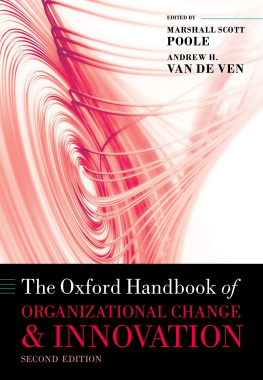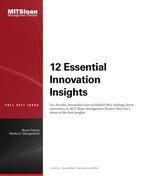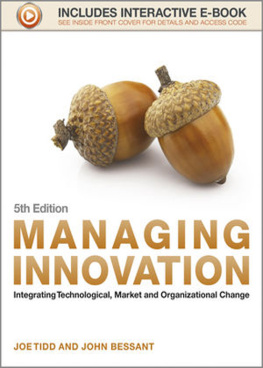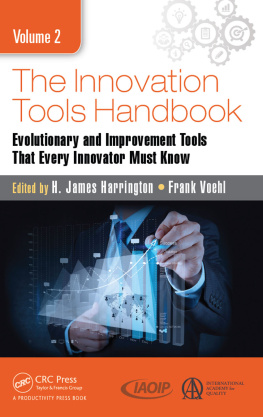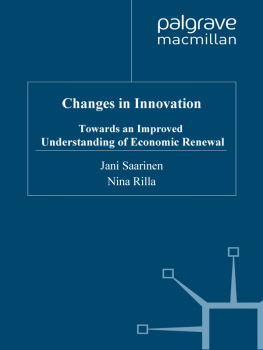Innovation Project Management Handbook
Dr.Gregory C. McLaughlin
Dr. William R. Kennedy
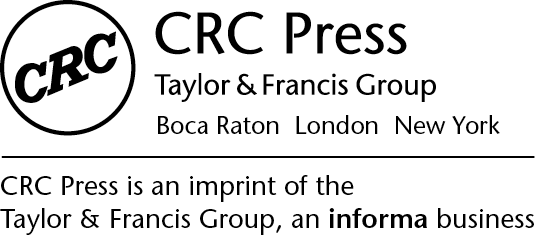
CRC Press
Taylor & Francis Group
6000 Broken Sound Parkway NW, Suite 300
Boca Raton, FL 33487-2742
2015 by Taylor & Francis Group
CRC Press is an imprint of Taylor & Francis Group, an Informa business
No claim to original U.S. Government works
Version Date: 20160302
International Standard Book Number-13: 978-1-4987-8827-4 (EPUB)
This book contains information obtained from authentic and highly regarded sources. Reasonable efforts have been made to publish reliable data and information, but the author and publisher cannot assume responsibility for the validity of all materials or the consequences of their use. The authors and publishers have attempted to trace the copyright holders of all material reproduced in this publication and apologize to copyright holders if permission to publish in this form has not been obtained. If any copyright material has not been acknowledged please write and let us know so we may rectify in any future reprint.
Except as permitted under U.S. Copyright Law, no part of this book may be reprinted, reproduced, transmitted, or utilized in any form by any electronic, mechanical, or other means, now known or hereafter invented, including photocopying, microfilming, and recording, or in any information storage or retrieval system, without written permission from the publishers.
For permission to photocopy or use material electronically from this work, please access www.copyright.com or contact the Copyright Clearance Center, Inc. (CCC), 222 Rosewood Drive, Danvers, MA 01923, 978-750-8400. CCC is a not-for-profit organization that provides licenses and registration for a variety of users. For organizations that have been granted a photocopy license by the CCC, a separate system of payment has been arranged.
Trademark Notice: Product or corporate names may be trademarks or registered trademarks, and are used only for identification and explanation without intent to infringe.
Visit the Taylor & Francis Web site at http://www.taylorandfrancis.com
and the CRC Press Web site at www.crcpress.com
CRC Press is a premier publisher of scientific, technology and medical content, reaching around the globe to publish the pioneering achievements of science that provide researchers, professionals, and students with the resources they need to make further advances. CRC Press is a member of Taylor & Francis Group, an informa business.
For more authoritative books in your field and for in-depth information about CRC Press books, visit www.crcpress.com
- Join our email list to receive exclusive, unadvertised discounts and alerts when new books publish in your field
- Visit Featured Authors to learn about your favorite author with detailed bios, news about their work, and discussions of their research
- Read the latest book reviews from industry experts, influencers, and thought leaders about STM (Science, Technology and Medicine) reference and textbooks
The tables in this ebook have been modified to enhance the reader experience. On compatible devices, the enhancement should keep the header rows visible as you scroll through a table.
Please report any issues with this ebook or any desired enhancements to the .
www.crcpress.com
Preface
This book represents a maturing of our knowledge, experience, and practice in innovation, and focuses on innovation opportunity project success. There are numerous texts on innovation managementwhat it is and why it is important. That said, there are few on how to implement innovation at the macrolevel, and more specifically, at the microlevel within an organization. This handbook is a compendium of our own and previously developed and widely known innovation process support tools. The new tools and processes we have developed in this book are a result of the decades of work in the field of innovation. In tandem with established tools created by other pioneers, we have also tested them successfully in actual field conditions. Each tool and process is described in detail in an easy to follow format and complemented with actual application scenarios and exercises. We feel this format best serves innovation leaders, teams, and professionals in implementing or commercializing an innovation opportunity within their organization.
In a world of constant change, we continue to build upon the knowledge shared in our prior books. The seminal difference from this book and our previous writings is that we have included many new innovation tools, such as the innovation opportunity profile (Chapter 3), and revisions to a few of the first-, second-, and third-generation tools. We also provide a more detailed process for innovation project success. We introduced the term innovation opportunity, which broadly acknowledges the reality that innovation success is truly a favorable combination of key performance parameters associated with an unfulfilled need, time, actionable information (data), and the human element. By design, this is truly an Innovation Project Manager and Practitioner Handbook , a how to guide on identifying, selecting, and managing a successful innovation opportunity project resulting in sustained success.
We acknowledge there is a wide spectrum of innovation tools, approaches, and methodologies already in use today, both in the private and public sectors. Some of the tools from legacy methodologies such as Six Sigma, Lean, Agile, continuous process improvement, project, and change management methodologies, incorporate and share some of the same or very similar processes and tools. We also acknowledge this handbook is not intended as a stand-alone resource or tool bag for the NOVATE methodology and sustained innovation success. Subsequently, we suggest the reader to first examine A Guide to Innovation Processes and Solutions for Government as a prequel to this book. The government book was designed to introduce a new alternative methodology (NOVATE) to what many perceive is a very bureaucratic, complex, and industrial age requirements definition and acquisition process that literally hamstrings the timely pursuit of any type of innovation in the government. Although the book introduced a tailorable, flexible, and timely approach for government agencies and private sector entities working with the government, it is certainly applicable to any type of organization seeking a roadmap to sustained innovation opportunity success.
As a precursor to embarking on any innovation opportunity project, it is critical to first develop an enterprise innovation strategy that will set the tone across the organization and ensure a receptive culture and environment conducive to innovation. Organizations that repeatedly succeed in identifying and capitalizing on innovation opportunities embrace innovation as a core value or part of the culture and organizational DNA. These organizations support innovation not only in spirit, but they repeatedly pass the litmus test by investing the necessary resources (financial and human) with tenacity, commitment, and determination.
Fundamentally, we believe innovations come from human needs that remain unsatisfied. Over time, these unfulfilled needs are either met by the organization or competitor, remain undiscovered, or eventually usurped by another more compelling need. Individuals performing the work or those receiving the product or service can best identify, define, and articulate these needs. Appropriately, we use the information generated by individuals to define the innovation opportunity projects and develop the potential outcomes. Numerous examples provide a platform for describing tools and demonstrating principles and practices associated with the NOVATE process. We identify seven unique processes, based on innovative outcomes. We recognize that each outcome has its own unique circumstances. Subsequently, the reader can tailor the processes and associated tool sets offered in this handbook to the needs of their organization and situation. After selecting one of the seven processes that fit your desired innovation outcome, follow the detailed process maps provided in the applicable chapter to achieve a desired outcome. Worthy of note, the processes and example scenarios in each chapter cover the common types of innovation projects. Our approach is to innovate incrementally rather than to rely on discovery or chance.


